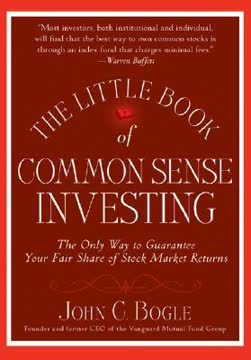Key Takeaways
1. Investing is an Efficient Way to Build Wealth
The simplest reason is this: it’s an efficient way to build wealth.
Compound interest. Investing allows you to take advantage of compound interest, earning interest on interest, which accelerates wealth creation. Unlike savings accounts with low annual percentage yields (APY), investments can significantly outperform inflation, preserving and growing your purchasing power over time. For example, investing $100 per month in an index fund with an average 7% return over 20 years can yield approximately $49,194.59, compared to about $24,000 in a basic savings account.
Inflation protection. Investing helps protect your money against inflation, the natural rise of prices for goods. Money nerds make a big deal about inflation because your money will essentially lose value over time if it isn’t at least keeping pace with inflation. From January 2008 to January 2017, 2 percent represented a decent rule of thumb for what to expect inflation to be.
Time is your ally. The earlier you start investing, the longer you have to let compound interest work for you, and the better you can weather market fluctuations. Starting early also reduces the amount you need to invest each year to meet your financial goals. For instance, someone starting at 26 and investing 4% of their salary to get an employer match will accrue significantly more wealth by age 62 than someone who waits until 36, even if the latter invests a higher percentage of their salary.
2. Assess Your Financial Readiness Before Investing
You have to earn the right to invest.
Financial foundation. Before diving into investing, ensure you have a solid financial foundation. This includes setting financial goals, mastering cash flow (budgeting), building an emergency fund (3-6 months of living expenses), paying off high-interest debt (credit cards, payday loans), and ensuring student loans are current. Investments are the sexiest part of personal finance, but it’s just one piece.
Investing isn't just for the wealthy. There’s a misconception that you need to be in a certain place before you can start investing. That was true when I was in my twenties, too. I sort of had this idea that investing was for the wealthy or investing was for the financially successful, which meant I had to get my stuff together before I could really go in big. I think a lot of people feel that way because it’s intimidating and, at least in the past, you had to have $500 to $5,000 to open an account, so you really did need to have some money set aside outside of savings that could be used for investing.
Checklist for readiness. Use a checklist to assess your readiness to invest. This includes setting financial goals, mastering cash flow, building an emergency fund, paying off consumer debt, ensuring student loans are current, educating yourself about the stock market, and saving for retirement. If any of these boxes remain unchecked, pause investing (except for employer-matched retirement plans) and focus on building a solid financial base.
3. Master the Language of Investing
Investing is not unlike Mr. Fugami’s Algebra class.
Common language. Investing, like any specialized field, has its own jargon. Understanding key terms is essential for effective communication and decision-making. This includes grasping concepts like asset classes (equities/stocks, bonds, cash), portfolio, equities/stock, shares, securities, bonds, fixed income, cash and cash equivalents, asset allocation, diversification, sectors, time horizon, risk tolerance, brokerage, brokerage account, actively managed, passively managed, index, expense ratio, return on investment (ROI), mutual fund, index fund, exchange-traded fund (ETF), compound interest, and dividend.
Asset allocation and diversification. These are two of the most critical pieces to your investing life because it’s part of what will help keep you sane and able to weather the panic when the stock market takes its many tumbles. Asset allocation is the process of deciding in which asset classes you should be investing and how much of your portfolio should go into each. You need to consider your time horizon (when you’ll need the money), goals, and risk tolerance when determining your asset allocation.
Investing theories. While understanding investing theories can be helpful, it's not essential for beginners. Focus on mastering the core concepts and building a solid foundation before delving into more complex topics.
4. Mitigate Risk Through Diversification and Asset Allocation
Asset allocation is something that can really help people.
Diversification. Don't put all your eggs in one basket. Diversify across asset classes (stocks, bonds, cash) and within asset classes (invest in stocks of many companies across different sectors). This reduces the impact of any single investment performing poorly.
Asset allocation. Determine the appropriate mix of asset classes based on your time horizon, goals, and risk tolerance. A longer time horizon and higher risk tolerance typically allow for a more aggressive portfolio (higher allocation to stocks), while a shorter time horizon and lower risk tolerance require a more conservative portfolio (higher allocation to bonds and cash).
Risk tolerance. Understand your comfort level with potential losses. Being risk-averse generally correlates with putting your money in investments with lower yields, like bonds. Having a high risk tolerance could mean you take too much risk and don’t properly balance your portfolio. You may need to learn how to battle against your natural risk tolerance—no one likes losing money!
5. Prioritize Retirement Savings, Especially Employer Matches
You have to earn the right to invest.
Retirement first. Saving for retirement should be a top priority due to tax advantages, potential employer matches, and the power of compound interest over long periods. Contribute at least enough to get the full employer match, as this is essentially free money.
Retirement accounts. Understand the different types of retirement accounts, including 401(k)s, 403(b)s, traditional IRAs, and Roth IRAs. Each offers different tax benefits and contribution limits. Also, understand the vesting schedule. A vesting schedule determines when you’ll actually be able to walk away with the money your employer is putting in your retirement account.
Beyond retirement. While retirement savings are crucial, also consider investing outside of retirement accounts to meet other financial goals, such as buying a home or starting a business. Goal setting is a critical part of your investing plan. Having a low risk tolerance, better known as being risk averse, generally correlates with putting your money in investments with lower yields, like bonds. Having a high risk tolerance could mean you take too much risk and don’t properly balance your portfolio. You may need to learn how to battle against your natural risk tolerance—no one likes losing money!
6. Strategize Student Loan Repayment Alongside Investing
Yes, you should be investing when you have student loans.
Interest rate matters. The decision to invest while paying off student loans depends on the interest rate. Prioritize paying off high-interest debt (above 7%) before investing in taxable accounts. For lower-interest debt, consider investing alongside repayment.
Refinancing. Refinance student loans to secure a lower interest rate, freeing up funds for investing and accelerating debt repayment. However, be aware that refinancing federal loans into private loans forfeits eligibility for federal programs like debt forgiveness and income-driven repayment plans.
Retirement contributions. Even with student loan debt, contribute to employer-matched retirement plans to take advantage of free money. The one exception to ‘earning the right to investing’ is getting free matching money. Obviously, go get that. If putting in 3 percent gets you 3 percent and you’re going to stick around for a year or two, go get that free money.
7. Choose a Brokerage and Investment Options Wisely
Vet them like a dating partner.
Brokerage selection. Carefully vet potential brokerage firms, considering factors like service, minimums, reputation, customer service, website/app usability, fees, and adherence to fiduciary standards. Options include full-service brokerages, discount brokerages, online financial advisors (robo-advisors), and apps.
Investment options. Decide whether to invest in actively managed mutual funds or passively managed index funds/ETFs. Passively managed funds are lower cost. Also, consider your time horizon, goals, and risk tolerance when selecting investments.
Fees. Understand all fees associated with your brokerage account and investments, including expense ratios, commissions, and account service fees. Lower fees maximize your returns over time.
8. Sniff Out Scams and Vet Financial Advice
If it seems too good to be true, then it probably is.
Due diligence. Develop a strong "bullshit detector" to identify potential scams and unsuitable investments. Be wary of promises of quick money or guaranteed returns.
Vet advisors. Use FINRA's Broker Check and the SEC's Investment Advisor Public Disclosure tool to verify the credentials and disciplinary history of potential financial advisors. Ensure your advisor upholds fiduciary standards and discloses how they are compensated.
Question everything. Ask questions about any investment you don't fully understand. If you're not satisfied with the answers, don't invest.
9. Understand Market Cycles and Ride Out the Panic
The bottom line is the stock market does go up and down.
Market volatility. Accept that the stock market is cyclical and will experience both bull (rising) and bear (falling) markets. Don't panic and sell during downturns, as this locks in losses.
Long-term perspective. Maintain a long-term perspective and stick to your investment plan. The market has historically recovered from crashes and corrections.
Strategies for handling downturns. To protect yourself from yourself, separate your bank and investment accounts, set aside cash in an emergency fund, assign a goal-related name to your accounts, automate your contributions, have a plan, hire a pro, and don’t be tempted by the latest hot tip.
10. Adopt the Mindset and Habits of Wealthy Individuals
Wealthy people value legacy.
Long-term thinking. Focus on building generational wealth rather than short-term gains. Prioritize the preservation and protection of assets.
Continuous learning. Invest in yourself through education, skill development, and networking. Seek out opportunities for growth and improvement.
Financial discipline. Live below your means, save consistently, and avoid unnecessary debt.
Last updated:
Review Summary
Broke Millennial Takes On Investing receives mixed reviews, with an average rating of 3.93/5. Readers appreciate its beginner-friendly approach to investing, conversational tone, and helpful resources. Some find it informative and confidence-boosting, while others criticize its simplicity or feel disconnected from the author's privileged background. The book is praised for filling a gap in personal finance literature for young adults, covering topics from basic concepts to more advanced investing strategies. However, some readers note its American-centric focus and occasional lack of depth.
Broke Millennial Series
Similar Books










Download PDF
Download EPUB
.epub digital book format is ideal for reading ebooks on phones, tablets, and e-readers.






